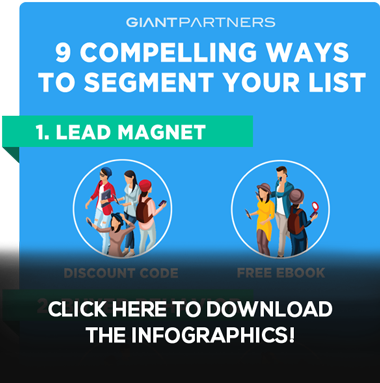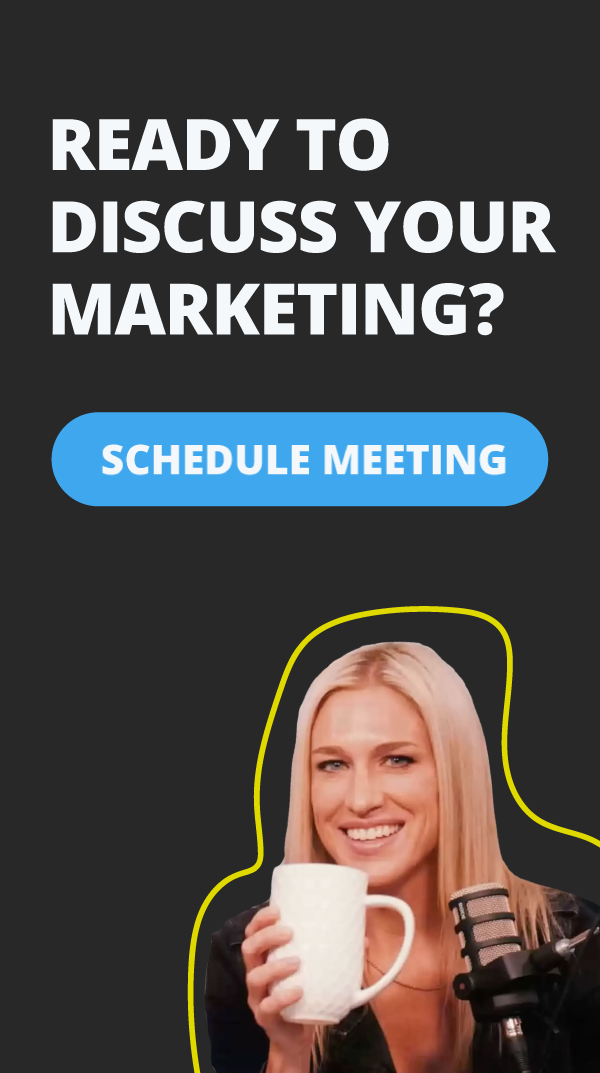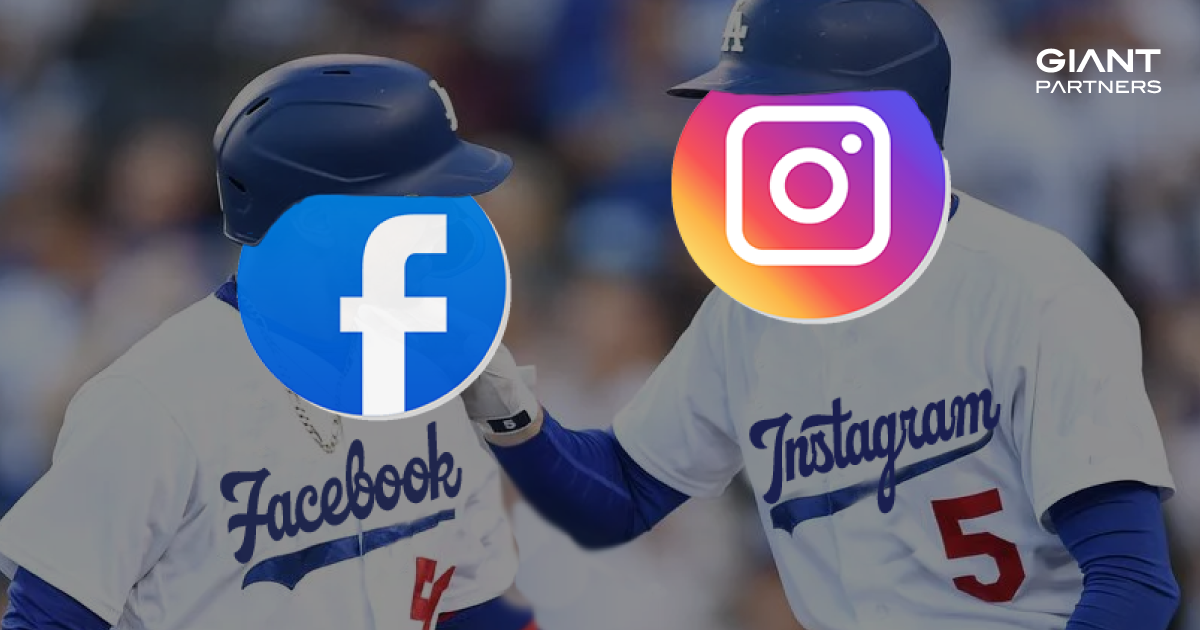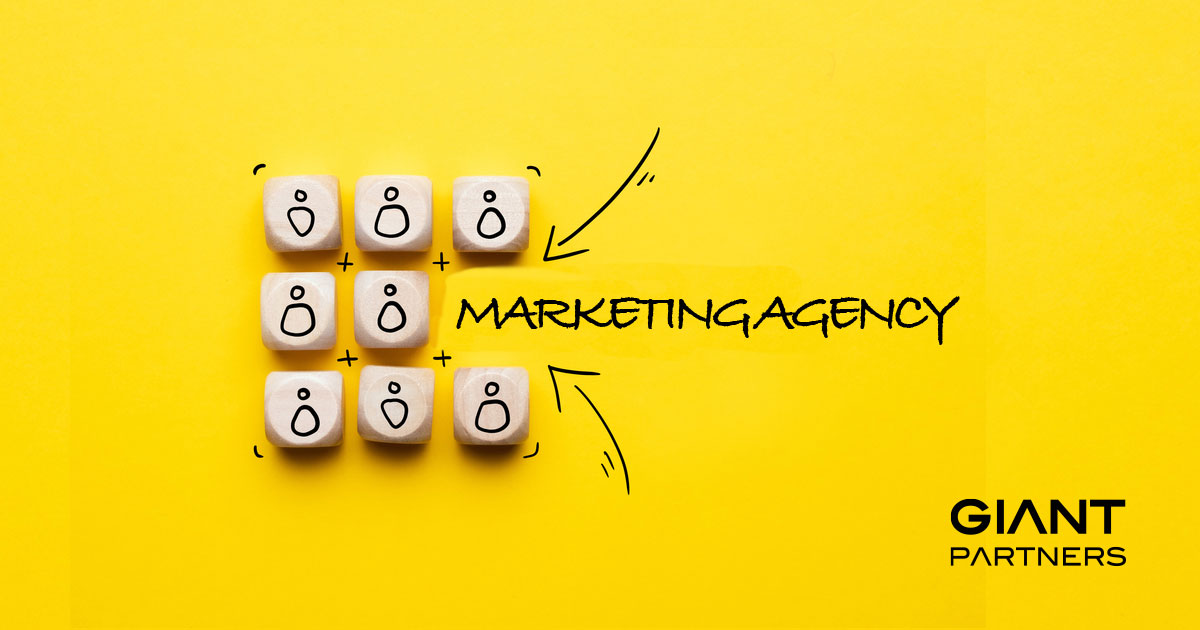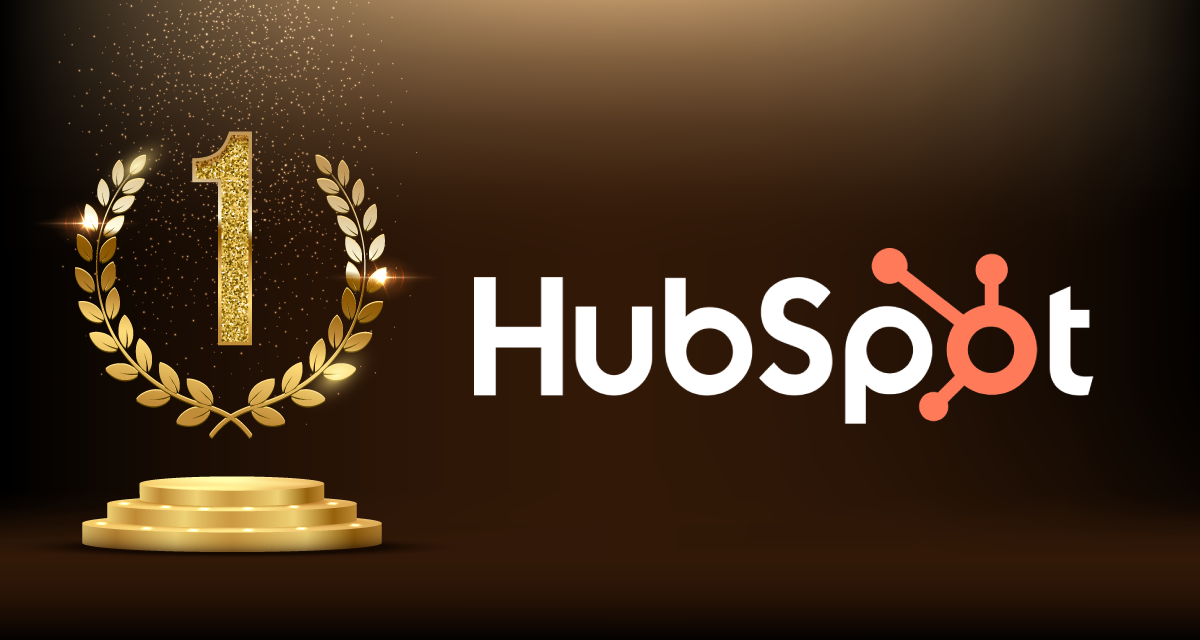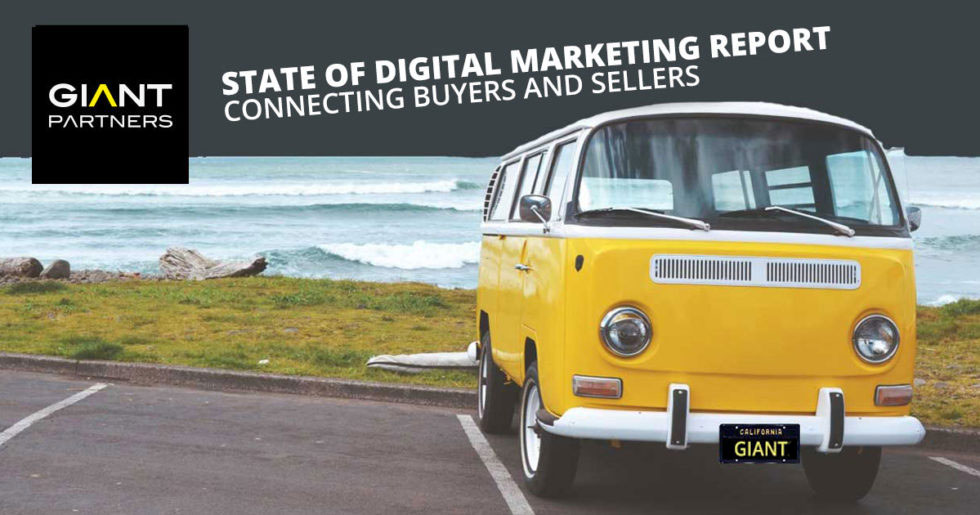With today’s technology, there’s numerous ways for you to reinforce your marketing efforts.
Most marketers put emphasis on new channels like chatbots, Instagram influencers, and other new marketing opportunities to get in touch with customers.
But you should not be blinded by these new technologies, because there’s still an old-timer that works wonders — Email Marketing campaigns.
Email has been around for a while. There’s a lot of comprehensive data analysis that’s been done in the past to conclude that
EMAIL IS STILL THE BEST AND MOST EFFECTIVE MESSAGING CHANNEL THERE IS.
With an impressive 4.200% ROI, it will be totally stupid and reckless to not include email in your marketing strategy.
In this comprehensive guide, we will walk you through every step that you need to take: from setting up your email marketing and segmenting your list, to building your own strategy and creating successful email campaigns. Let’s do this!

In marketing, the importance of a strategy is always in the numbers. For us marketers, analytics is everything.
So how exactly can I show you how important Email Marketing is? Well, of course, by showing you some email marketing stats that will blow your mind. Numbers never lie.

Matthew Magnante - Content Writer & Strategist at FitnessVolt
According to Matthew Magnante, Content Writer & Strategist at FitnessVolt, Email marketing emphasises communication and awareness with current consumers and clients. Emails may be used to persuade and attract new clients during an outreach effort. The most effective email marketing campaigns are strategized by channel, audience, and objectives.
Email Marketing Stats That Will Blow Your Mind:
99% of consumers check their email every day.
The average email address is worth $105
59% say that email marketing influences their purchase decisions.
73% of millennials say email is their preferred communication channel to get updates from businesses.
In 2020, there’s 3.9 billion email users worldwide. It is set to grow to 4.3 billion in 2023.
For every $1 spent on Email Marketing, an average of $42 return can be expected
80% of small to midsize businesses rely on email marketing as their main channel for customer acquisition and retention
 It doesn’t have to be too complicated. You can simply describe how the image looks like. If it’s infographics or graphs, you can just put the data presented!
It doesn’t have to be too complicated. You can simply describe how the image looks like. If it’s infographics or graphs, you can just put the data presented!
Step 1 – Building Email List
An email list to your email marketing is the rocket to Neil Armstrong. Without it, you will get nowhere. And one email address will bring you closer to the moon.
So, how can you exactly build a sizable email list?
Well, there are really several ways to do this. But it all boils down to two ways:
1. Attract people with a compelling offer – This is highly dependent on which industry you’re in. Audiences of a marketing service firm might be more attracted to free consultation, ebooks and guides; while the traffic from a fashion retail website might like coupons and discounts, instead.
2. Buy targeted email list – Building your email list from scratch can be a daunting task, which leads to more and more businesses choosing to buy lists from reputable companies.
While this can be a wise and prosperous investment for your business, you’ll want to make sure you do it right. You’ll want to make sure that you get an email list with email addresses that people actually respond to.
LISTGIANT can provide you with a comprehensive list of responsive prospects. Click here for more info.
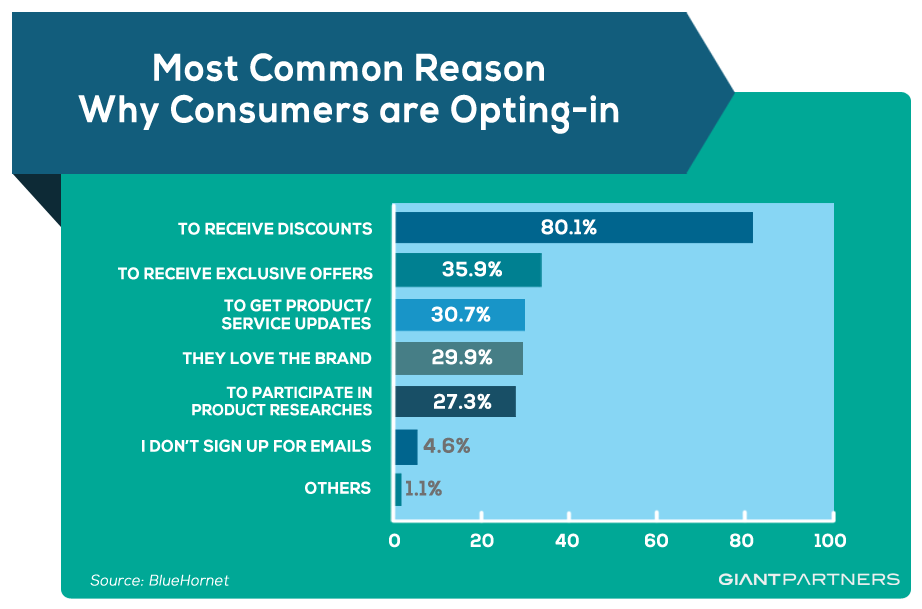
Step 2 – Email Marketing Service that Suits Your Needs
When your email list is ready, it is time to move to the next step, which is choosing an email provider that will best fit your business needs.
Choosing the right marketing service for your business can have a significant effect on the success of your future emaimarketing campaigns.
So, what makes a good email marketing service?
Drag and Drop email builder – Your provider should enable you to create exceptional newsletters without the hustle and bustle.
Marketing Automation – you should be able to map out emails that are personalized and relevant to each person in your list without putting in a lot of effort. Find a provider that will provide a friendly user-interface, so you can build your automation without having to hire extra help.
Manage Contacts – A good email marketing service should have features that will make managing your contacts easy-peasy and will enable you to segment your list into smaller groups.
Analytics – This is crucial. You should be able to get real-time and accurate data of your campaigns. Analytics is the most important element for improving your email marketing strategy for long-term success.
Email marketing is one of the most cost-effective marketing tools for every business size. If utilized correctly and with the right email marketing program, this type of marketing is easy to manage, allows you to establish a direct contact with your customers and you have full control over it.
With all those reasons, let’s go ahead and review 4 different email marketing platforms below:
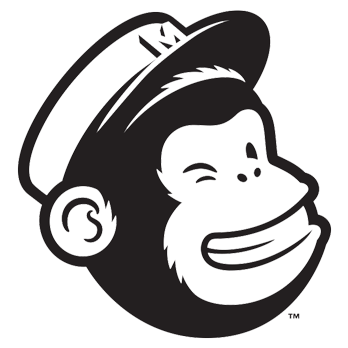
Mailchimp
This is a simple email marketing tool suited best for smaller businesses and bloggers as it comes with a free plan. Their services don't end with marketing. They also have social media integration and new features just keep sprouting.
Pros:
Generous Free Plan
Simple but powerful editor
Offers hundreds of integrations
cons:
Hefty price once you start needing paid subscription
Difficult set-up for email automation
pricing
Free - 2,000 Subscribers
$29.99/month - 2,500 Subscribers
$75.99/month - 10,000 Subscribers
$129.99/month - 15,000 Subscribers

Activecampaign
Activecampaign takes pride in their principle of “sending fewer emails while driving better results.” This provider specializes in email automation. Not only their email automation and list management is so versatile, they also have site messages feature that enables your site visitor to get targeted emails according to their browsing history on your site.
Pros:
Extremely powerful automation
Comprehensive reporting
One of the best for deliverability
Best for user segmentation
cons:
Complicated set-up and features
Takes a lot of work to get familiarize
No free plan; only 14-days free trial
pricing
$15/month - 500 Subscribers
$29/month - 1,000 Subscribers
$49/month - 2,500 Subscribers
$89/month - 5,000 Subscribers

Constant contact
One of the biggest email marketing services in the world, Constant Contact offers 60-day free trial and offers multiple customization options. What’s even more appealing is their user-friendly interface that requires no web development skills to set-up.
Pros:
Great dashboard metrics
Simple interface. Simple drag and drop email editor.
Handy free email templates for all season
cons:
There are limitations for email content, especially when attaching video.
Editor is glitchy. There are times when emails don't reflect how it looks on the editor once it is sent to the inbox.
pricing
Basic Plan:
$20/month - 500 subscribers
$45/month - 2,500 subscribers
$65/month - 5,000 subscribers
$95/month - 10,000 subscribers
Plus plan:
$45/month - 500 subscribers
$70/month - 2,500 subscribers
$95/month - 5,000 subscribers

drip
Their greatest appeal is their very beginner-friendly interface, but highly intelligent marketing automation. Drip is a great choice for small ecommerce businesses that sell multiple products; their metric reporting especially excel for learning customer’s intent and purchasing behavior.
Pros:
In-depth data dashboard and filters
Simple but powerful automation builder
cons:
No free template library
Limited A|B testing functionality
pricing
Free - 100 Subscribers
$49/month - 2,500 Subscribers
$122/month - 5,500 Subscribers
Enterprise - Custom pricing for 5,000+ Subscribers
Step 3 – Set Expectations
When people sign up on your list, always keep in mind that they did it for a reason. And depending on what you have promised them upon their registry, you have to make sure that you’ll follow through.
If you’ve promised that you will only send them newsletter and product updates, you should just do so. If you promised an entry for a giveaway in return for their subscription, make sure to send them updates and the result about the giveaway.
You can set these expectations on your sign-up page or by sending a welcome email. I highly recommend the latter– having it is personalized and making it look like a written email especially made for the recipient is even better.
This can build a connection between you and your prospect, and sets your footing for a good start.
Welcome and thank them, then proceed with the details of the content they should expect to get from you in the future.
It sounds simple, right? But many businesses fail on this aspect.
Some will promise to send “occasional updates and promotions” then proceed to send daily email promotions. This is just setting yourself up for a high unsubscribe rating and your emails are more than likely to be marked as spam.
However, if you’ve committed to sending daily updates and you fail to deliver, this can result in irate subscribers as much as the first example above.
The key to a successful campaign is having a strong call-to-action and consistent follow-ups.
Step 4 – List Segmentation
What is list segmentation?
List segmentation is the practice of dividing your whole email list into smaller and more targeted groups
The main goal of list segmentation is to increase your subscribers’ engagement and for them to actually grab their attention for them to actually open and click on your campaigns and to ultimately send them down the end of your sales funnel.
9 Compelling Ways of Segmenting Your List
1. Lead Magnet – This is one of the best ways to segment your subscribers from day one of subscribing. It is pretty straight-forward and helps you identify what kind of content the person is really interested in.
For instance, those who subscribe to get free guides are more likely to be interested in blog articles. And those who signed-up for discount code are more likely to engage with promotional emails about sales with coupon codes.

2. Buying Behavior – Buying behavior of your subscriber is not only a good parameter for planning campaign size and budget, it is also very good for segmenting your customer into list groups.
You can segment these lists into smaller groups by looking at the frequency, amount and the timeline of their purchases. Some will be actively buying during the holidays while others might be actively buying smaller amounts throughout the calendar year.
This behavior will be your guidance for sending the right emails at the right time.
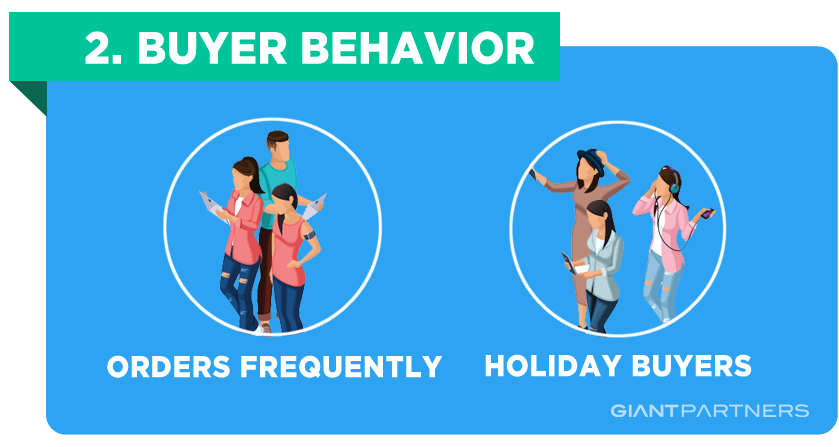
3. Content Interest – Keep in mind that every email address in your email list is a person with different preferences. Each is responsive to different content, topic and even formatting.
Some of your subscribers might enjoy colorful, well-designed promotional emails; while some are more responsive to plain texts, something that feels like from their friend.
The top 3 reasons for unsubscribe are: sending too many emails, irrelevant emails, boring and repetitive contents. This just goes to show how your content type impacts your email marketing.
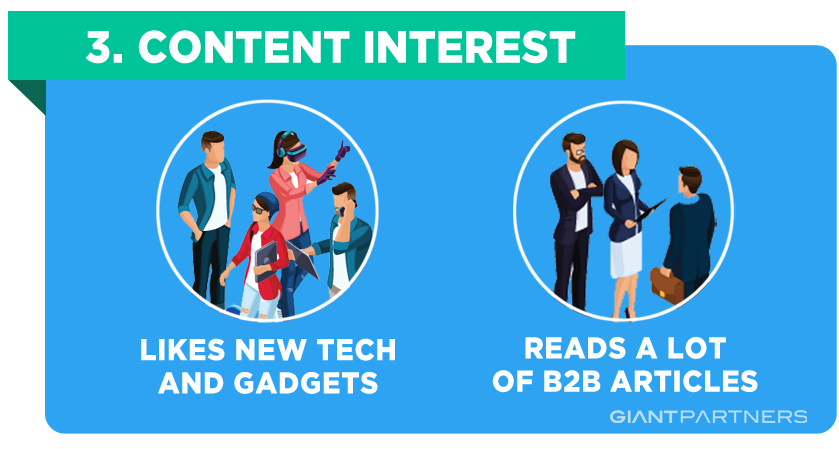
4. Engagement – We can put 100% of our heart and soul into an email campaign, but our email open rate is never going to reach 100% (unless you send it to 3 people, but what’s the point?)
Segmenting those who actually open your emails most of the time is a good way to reach out ONLY to those who are highly engaged.
You can use this list segment to send out time-sensitive emails like last chance announcements and exclusive offers to promote loyalty.
On the other hand, you can also filter those who are disengaged and send them discounts and freebies to rekindle your connection with them. And remember, your subject line should make them want to click on it!
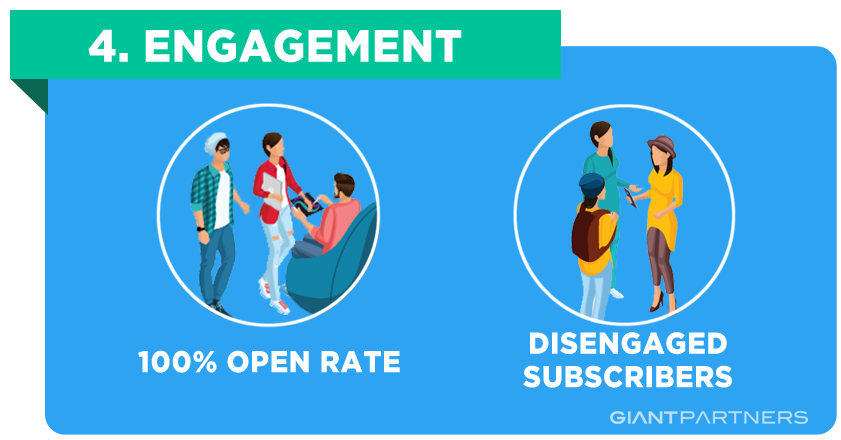
5. Demographics – This one is one of the most commonly used segmentation, maybe because of how straight-forward it is.
You can use this segmentation whether you are having people manually opt-in to your list or if you buy your initial list from a list provider.
(LISTGIANT can provide you with a comprehensive email list and do the segmentation based on demographics and other options depending on your needs. CLICK HERE TO LEARN MORE.)
You can customize content depending on gender, age, marital status, income, lifestyle, occupation, etc.
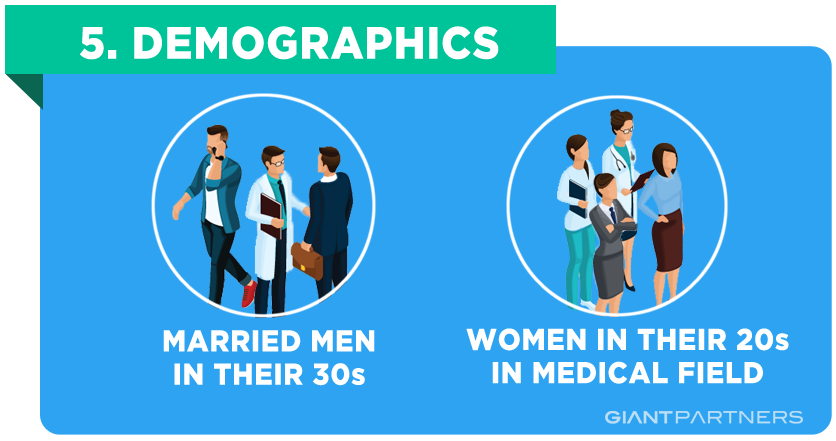
6. Stage in the Sales Funnel – Just like your ads, your emails should also be dependent on your sales funnel.
Segmenting subscribers based on their position on your sales funnel will make sure you are delivering the correct content, create powerful customer journey and in return, will tremendously lower your unsubscribe rate.
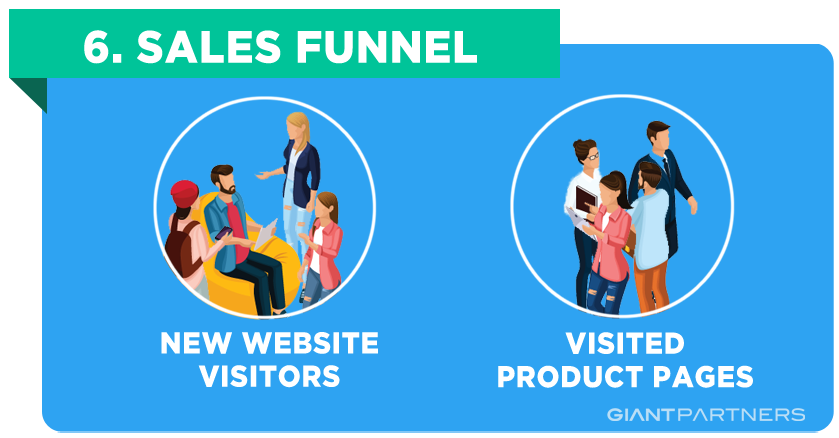
Segmenting subscribers based on their position on your sales funnel will make sure you are delivering the correct content, create powerful customer journey and in return, will tremendously lower your unsubscribe rate.
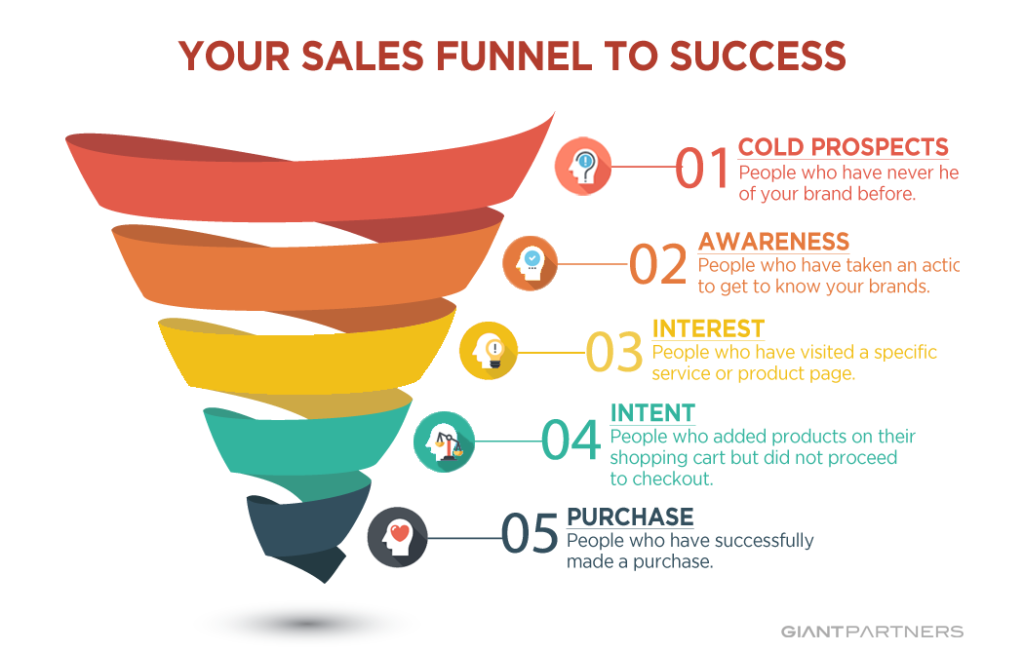
7. Purchase History – Looking at your subscribers’ purchase history will make the process of coming up with product recommendation a breeze.
This is a very effective way to increase customer retention and keep you away from creating an email that will just be a waste of time for you and your subscriber.
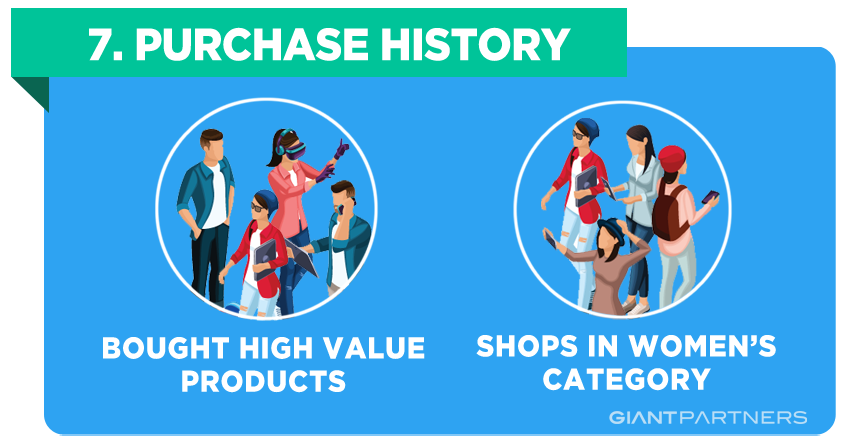
For example, those who bought coffee brewing machines might be interested in buying tea and coffee pods. Or people who bought eco-friendly bamboo toothbrushes might be interested in other eco-friendly products like ecobags, metals straws, etc.
8. Preferences – Having your subscribers select exactly which content they want to receive is a smart move that only few are taking advantage of.
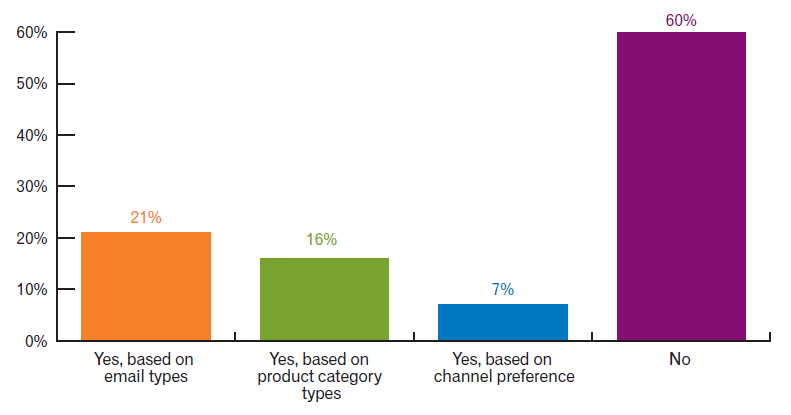
Having them personally pick out what they want to get will not only guarantee that they are more likely to be engaged and will also reduce unsubscribe rate.
Some might argue that doing this will lower your audience for each email, but this is not necessarily bad. Actually, it is a good thing! 700 highly-engaged people on a segmentation is far better than having 1000 people on a segmentation with only 10% engagement rate.
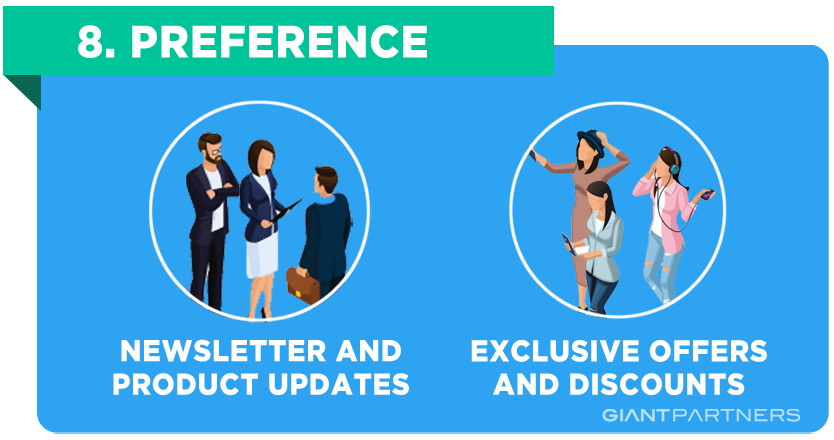
9. Cart Abandonment – Today, there’s a 69.57% average shopping cart abandonment rate. And obviously, leaving these hot prospects untouched would be a foolish move.
Converting even a few percent of these prospects can mean HUGE profit. And a great (and personal) way of doing this is by sending an abandonment cart email.
Including a discount code or free shipping coupon in these emails will surely do wonders! After all, the main reason for cart abandonment during checkout are the extra costs like shipping fee.
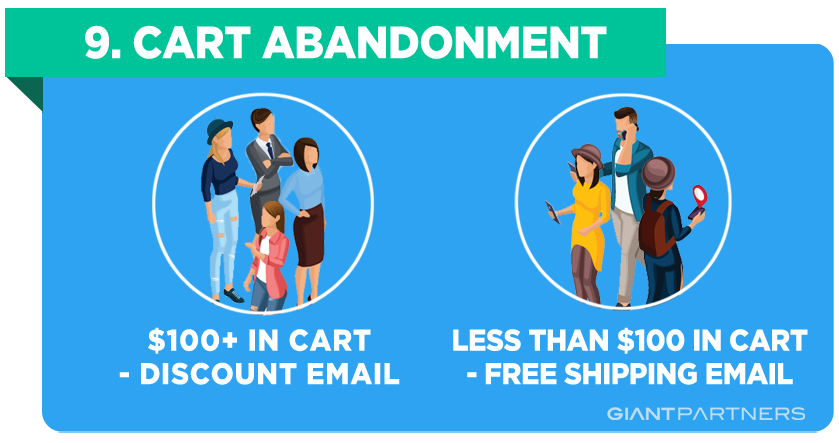
BONUS: Another creative cart abandonment email idea!
If you have a threshold for free shipping, send an abandonment email that states how much ore they need to add to cart before reaching the threshold, and recommend related products according to the items in their cart.

Ajay Porwal - Co-Founder, Marketing Head of Droid Owl
According to Ajay Porwal, Co-Founder, Marketing Head of Droid Owl, This involves crafting compelling subject lines, engaging visuals, and valuable content that resonates with the audience and aligns with the campaign objectives.
What is Email Automation?
Email automation is the ability to set-up email once and automatically send it using:
Action triggers which send specific emails based on an action like subscribing to your list, if they make a purchase, or visit your website.
Time triggers which send emails at a predetermined intervals like sending a welcome email as soon as subscribing, or 7 days after a purchase to ask for a review.
Email automation takes off the burden of sending email to each contact or list manually. Imagine the hassle of sending a welcome email one-by-one as soon as each person sign-up, then having to remember to send your first newsletter within the next 4 days, then another one after that..
It’s just too tedious.
That’s the whole point of email automation — to make your life easier and to deliver what needs to be delivered right when you need it to.
Mapping Your Email Sequence
This is probably the most important part of email marketing that only a few talks about. You will see lots of articles out there about email automation and why it is so great, but only a few would tell you how to exactly utilize it so your business can take full advantage of it EVERY. STEP. OF. THE. WAY.
So what exactly is email sequence? Email sequence is the group of emails in your automation. And just like when you’re setting up your ads, it is also the best idea to set up your email sequence according to your sales funnel.

Yes, it’s this guy again!
This is the journey that your prospects and customers are taking. So it makes sense to send them content based on where they are on your sales funnel. This will make sure that you are sending relevant contents, and that the transition from your free value-added contents to sales pitch is not overwhelming.
Best Email Content to Add to Your Sequence for Each Level

Level 1 – Cold Prospects
On this very top level are the people who have never heard of your brand. It is a bit complicated, but you typically won’t have to deal with these prospects in email marketing unless you bought your email list from providers like LISTGIANT.
Your main goal here is for the recipient to open your email. Put a lot of thoughts on your subject line; make sure that it will spark curiosity.
And of course, offer your free value-added content in your email. Just like those people who subscribed to your list on your landing pages, your prospects on this level are more likely to only take action if you are bringing value.
What You Can Include in the Email:
- Free ebook or guide
- Free Webinar
- Free Infographics
- Educational Video
- Blog Post Article
- Make sure that you briefly talk about your brand.
- How your products/services will benefit them.
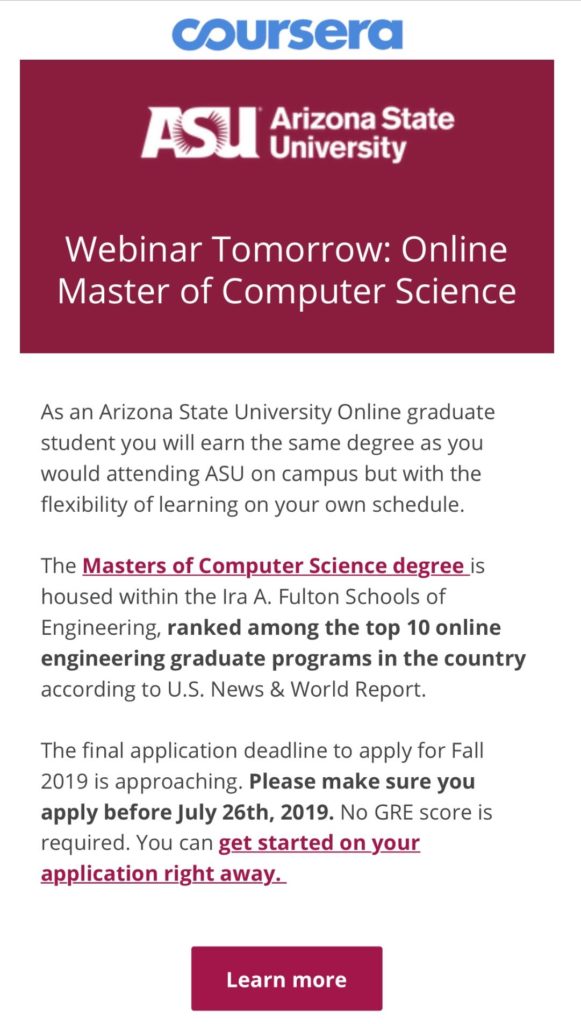

Level 2 – Awareness
These are people who took a step to get to know your brand. Usually, people who just signed-up on your list will fall on this level.
Your goal on this level is to push them to check out your products by slowly transitioning from your value content to sales pitch using a series of emails.
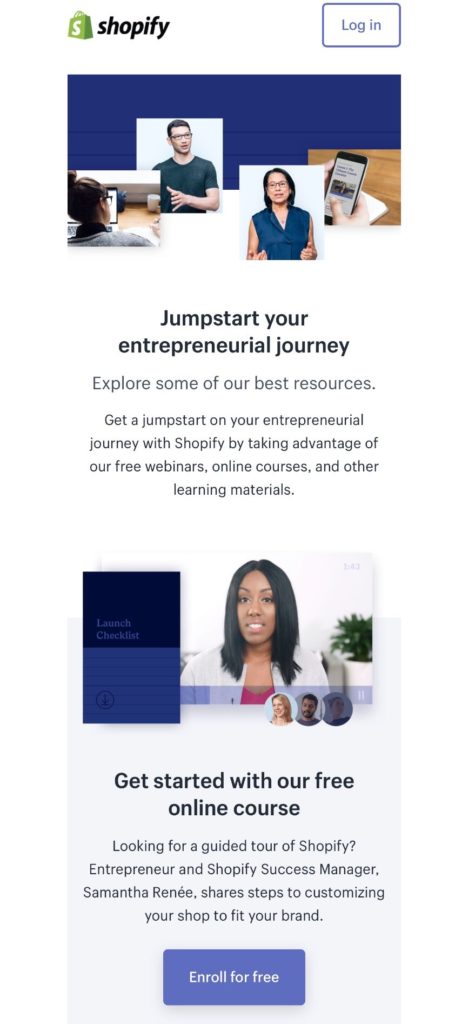
1st Email
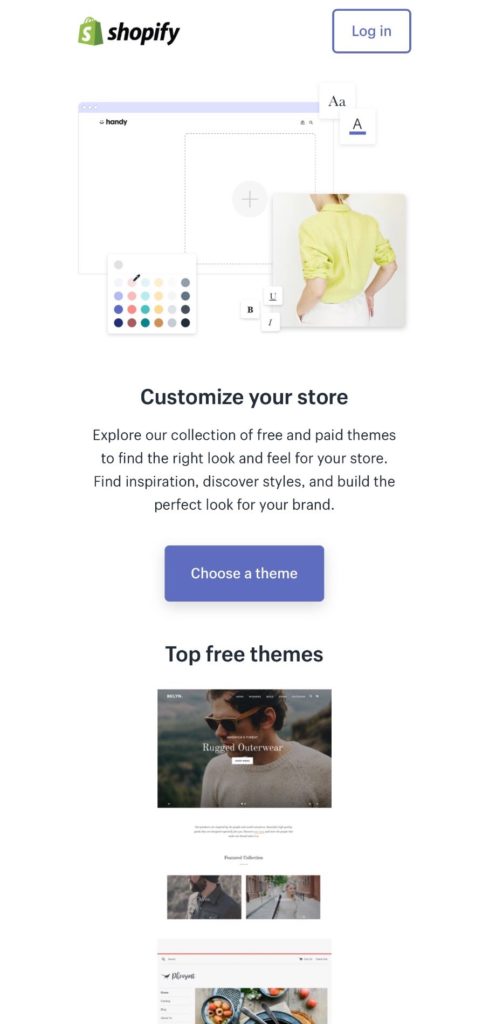
2nd Email
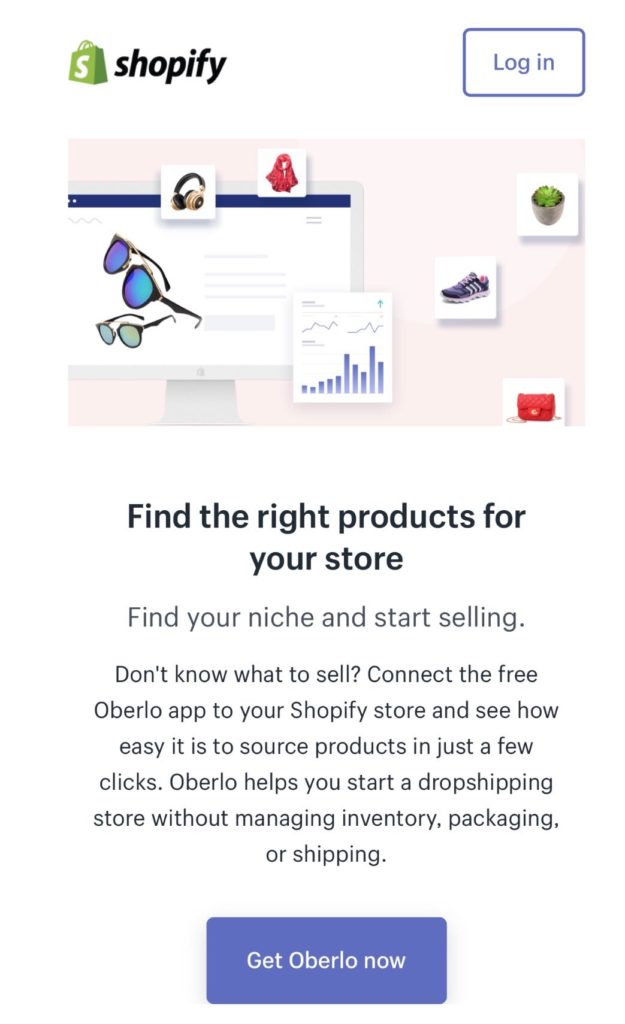
3rd Email
In this example from Shopify, you can see that the 1st email is offering absolutely free value-added content (free resources and online course.)
On the 2nd email, they highlighted the free themes on this email which is enticing. But once the recipient clicks the link to see all the available themes, the first half of the landing page are all paid themes while the free ones are at the bottom half of the page. Very smart!
On the 3rd email, they featured an app that can be installed on shopify stores. While this app has a free version, the product page linked to on the email is obviously highlighting the paid versions more.

Level 3 – Interest
This level includes your subscribers that are showing interest in your product(s). Maybe they clicked a link on your previous email that took them to a specific product or they could’ve visited your website on their own and started exploring.
The goal at this point is to keep them invested in the product and do what you can do to hype them up about it.
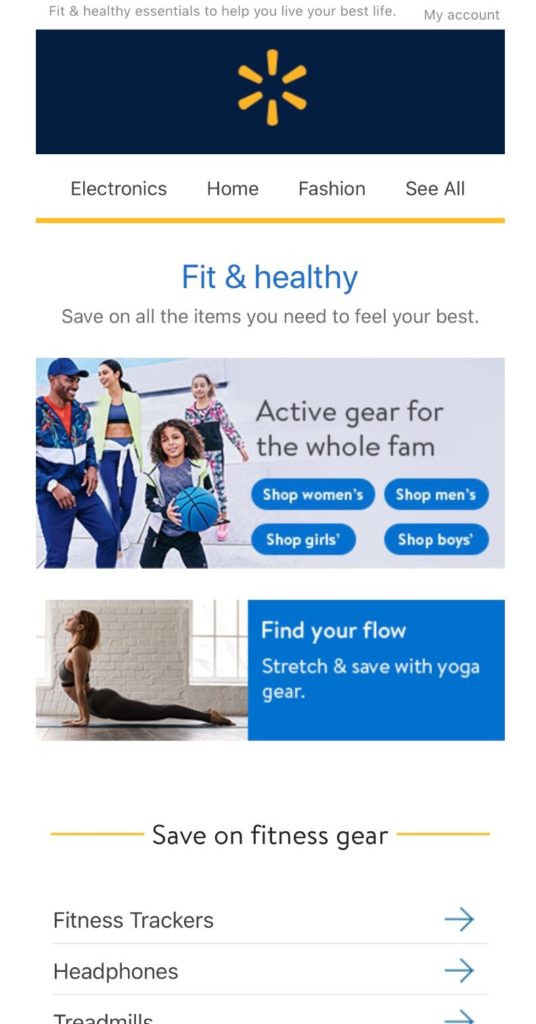
I got this email from Walmart about 2-3 hours after I searched for leggings and yoga mats on their website. It was very effective because this particular email reminded me of what I was looking for. If I didn’t get this email, there’s a big chance that I’ll forget I even needed new yoga gears and I wouldn’t have ordered it that same day.

Level 4 – Intent
These are subscribers that already added some items in their cart but did not proceed to checkout.
Your biggest goal for this level is to have these people actually proceed with their purchases by reminding them that they added products on their carts and overcoming whatever objections they have in mind.
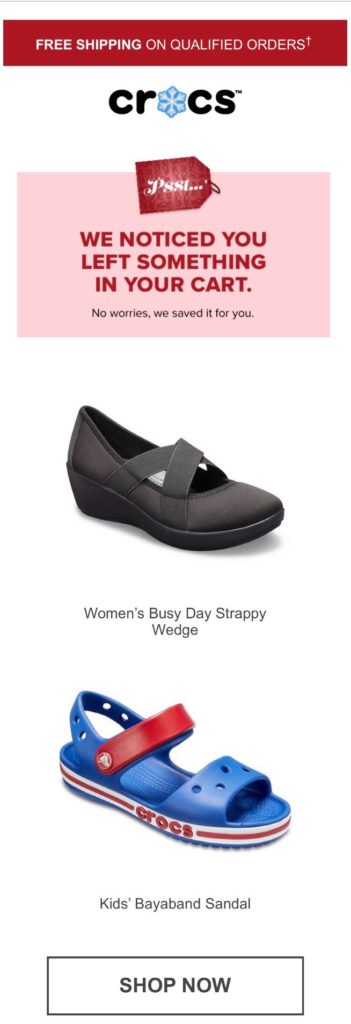
1st Email
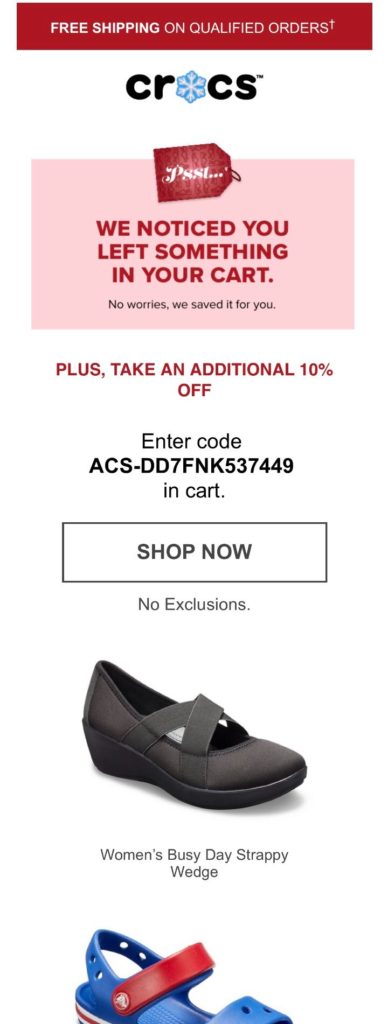
2nd Email
These series abandoned cart emails from Crocs is a great example for this level.
The first abandoned cart email that I got from Crocs is just a simple reminder of the items that I left in my cart, this was sent out about an hour after I left their website.
The second email was sent out 24 hours after the first email. In this email, they offered a 10% off of my purchase, which is a great deal! This soothes my objection about the tax that I had to pay for on top of the total amount, since the 10% off covers that taxes and gave me about $2 off.
I ended up placing an order after getting this 10% discount. Another good offer is free shipping, especially if you are not offering free shipping or your threshold is high.
As mentioned above, the main reason for cart abandonment are the extra costs. By offering discounts and/or free shipping, you are pacifying their objections and giving them a little push towards completing their purchase.

Level 5 – Purchase
This last level consists of the people who completed their purchase.
Yes, they are on the very bottom of the funnel now. But this only means that you have even more things to do! You know for a fact that these people are in your target market. It’ll be quite foolish to let them go at this point.
In this level, you have to do 4 things:
Keep them happy – follow up with their purchase after a certain period. If they have any concern, talk to them and do what you can to resolve it. Let them know you’re interested with their thoughts and ask them to leave a review (this is also beneficial to your brand.)
Retarget them – let them know you’re not forgetting about them! Send product recommendations related to their last purchase; if they need refills, send them before the ones that comes with their last purchase runs out. It’s as simple as that.
Read their Actions – monitor their behavior to build a more refined email timeline. Some people are only active during the holiday season, while others make purchases biweekly, possibly when they get their pay. Use this data to your advantage and send out emails with perfect timing.
Personalised future content – now that you have information about their behaviors and actions, it should be easier to personalise content just for them.
You will see that some customers check the baby or kids sections more often than other categories, some are into shoes and bags, some spend a lot on pet supplies. Some might spend a couple of dollars on small items while others tend to shop for bigger value items and brands.

Sean Stevens - Co-Founder, Director of ImmerseEducation
According to Sean Stevens, Director of ImmerseEducation, Without a well-designed email, even the best email marketing plan will fall short. While it is possible to get a consumer to take action with a plain text email, a more visually appealing HTML email will have a greater impact.

With that being said, your email sequences are highly dependent with what kind of website you have and what industry you are in. Use your sales funnel and the tips above for each level to ensure that you are sending relevant contents, reduce annoyed subscribers and significantly lower unsubscribe rate while improving your conversion!
Step 6 – Understand Your Email Analytics
Whichever service provider you decided to use, their quality of email analytics should be on top of your priority.
Though all metrics are important, there are 3 main metrics that you should keep your eye on: Open rate, Click-through rate and Unsubscribe rate.
These 3 are the main indicator of how successful your campaigns are.
Open rate is the amount of people that actually open your message. This will indicate your relationship with your subscribers. A catchy subject line is the charm of this metric. Hopefully, they are eager to see you when you pass by their inbox.
If you are experiencing a low open rate, revisit your emails and make sure you are offering valuable content. You should also revisit your landing page and/or welcome email to see if you are carrying out what you’ve promised upon signing-up to your list.
Click-through rate is the amount of people that clicked on a link in your email. This is a good indicator of just how effective your CTA is.
If your Click-through rate is on the lower side, you should revisit your email to see how clear your message is and improve your copy.
Unsubscribe rate is pretty straight-forward; it tells you how many people unsubscribe from your list.
If you have a high unsubscribe rate on a specific promotional email, take a look at that email and see that’s possibly going wrong. It’s a good idea to run a split test on this part with 2 different messaging and format to see which works best.
It is also good to check the interval of your emails. You might be sending promotional emails in 2 consecutive days and your 2nd email is taking a hit sure to this. Make sure that your time interval between each send makes sense.
Email analytics is a critical component when building and polishing your email marketing strategy. It pinpoints you with exactly where your email campaign is going wrong or how you can make your future campaign more successful.
(Still having trouble with your Email Marketing? Accelerate your email marketing performance with GIANT PARTNERS. Click here for more info)
Make sure your emails are mobile-ready
According to IBM, 49% of all email are opened on mobile devices. If your emails are not mobile-friendly, well… you’re leaving potential revenue on the table.
So, how do you make mobile-ready emails?
The first thing you need to make sure when designing your email is the emails’ width: it needs to be between 500 to 650 pixels. Make it wider than this and your recipients will have to scroll horizontally.
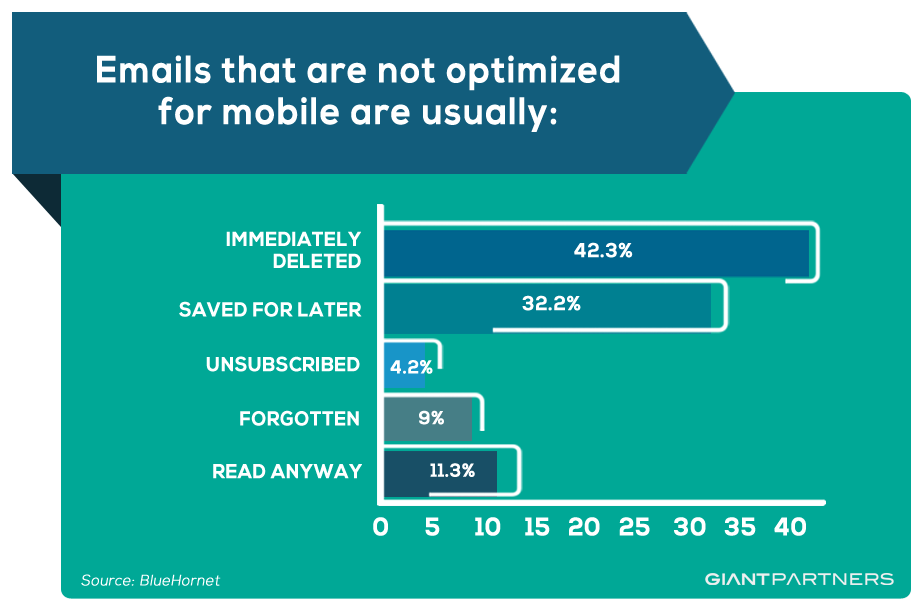
Perform A|B Testing on Subject Lines and CTAs
If you are struggling with your open and click-through rate, you should definitely look into doing A|B test or “split test” on your emails campaigns. Create different versions and see which will do the better.
Take note of the difference and apply this again on your next campaign. Keep testing until you have a concrete format that works best with your subscribers.
You can split test every aspect of your emails; you can start with simply testing 2 different subject lines, changing your CTA buttons from green to red, or as drastic as having a totally different copy on each email.
Good and Bad Emails
Good Email
Straight to the point
Clear Call To Action
Easy to scan through
Tone-appropriate
Bad Email
Unnecessary ramblings
Too much CTA
Having a wall of text
Unnatural tone
Appropriate Tone and Logical Sentences
When you are writing your email, you should put in effort to make it sound as natural as possible. I personally read my email out loud before sending it, just to make sure that the tone is appropriate to whom I am sending it to and if there are any awkward sounding sentences that I need to rephrase.
Just like when you’re speaking, you should also set the appropriate tone for your email depending on who’s the recipient. If you are sending out a proposal to a client, you need to sound professional; but if you are sending a birthday greeting to your subscriber, you would want to make it sound as if it’s from a friend.
Straight to the Point
Some people have the tendency to over-explain their point and give unnecessary details. And with the unlimited characters you are able to send in emails, it is easy to lose track of your word counts.
Most of your subscribers are so busy that they barely have time for an annual check-up, let alone read an email with 1000 words.
Your email should be concise; put as much information into as few words as possible.
Clear Call to Action
“What is the goal of this email?” Before writing an email, you should ask yourself this question first. This goal will determine the flow of your whole email.
This is another reason why you have to keep your email concise — Call to Actions in longer emails are easier to get lost in the content. Make sure your Call to Action is placed on obvious parts of your email and make it pop.
For promotional emails, having a “SHOP NOW”, “ADD TO CART” or “ NOTIFY ME” button in bold colors such as red or green is the most common approach that brands of all sizes use.
For plain text emails, it’s a lot less obvious but it’s definitely not hard to make it clear… which leads me to the next point.
Easy to Scan Through
Make sure that your emails are easy to scan through. The average attention span of an adult is just 8 seconds. That is shorter than that of a goldfish.
You have to make use of that 8 seconds and make sure to deliver well-organized and visually scannable email content.
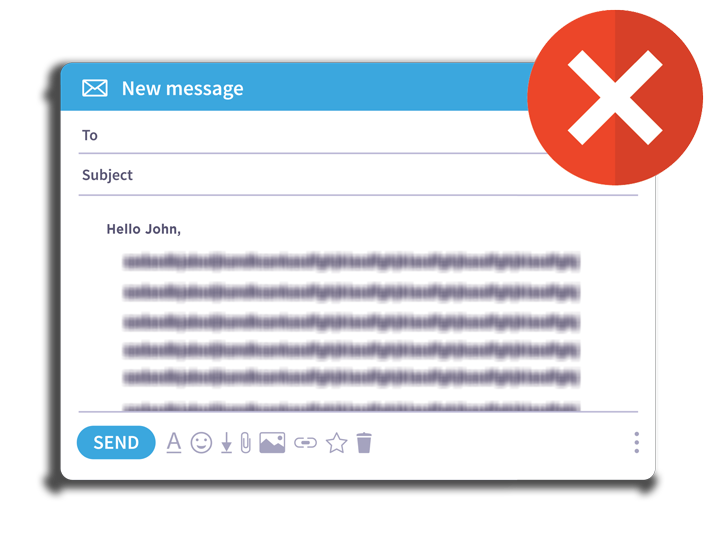

This can be made possible by cutting your paragraphs into smaller sections instead of creating a solid wall of text that makes it impossible to scan through.
Using this exact technique, you can make your call to action pop-out even if you are sending plain text emails. Make use of different formatting such as bold texts and bullets to get your point across.
Keep Your List Fresh
There are some people who would not opt-out of your email list but will stop opening your emails. It is tempting to keep inactive subscribers because seeing your email list grows bigger and bigger is just so satisfying…
Until you see your open rate.
Inactive subscriber is the killer of your open rate and makes your analytics less and less accurate over time.
Set a regular schedule for email list cleaning. It can be quarterly or every other quarter, as long as you are removing disengaged contacts who don’t bring any value to you.
Personalised Your Email
How many times have you read “Hey there” on the very first line of an email? For me, it’s a lot more than I would like.
It just seems so impersonal. In today’s technology, brands can definitely do better than that.
Every email marketing provider today offers personalisation tags that automatically configures your email with the contact’s details according to your added tag.

Email with personalisation tag
This means that you can have hundreds and thousands of subscribers in a list, and all you have to do is create one email for all of them and everyone will get a personalised version of your email.
Avoid Getting Marked as Spam
There is nothing more tragic than working on an email for hours only to have it land in the spam folder.
Spam filters have become so advance these days that it’s able to filter out:
- Certain spam words
- Dead links or sketchy website links
- ALL CAPS MESSAGES
- Broken HTML
- Emails with no sender info and unsubscribe link
Double check your copy and make sure you are only offering real value. Here’s some of the words which contribute to spam scores that you should avoid:

Zachary Colman - CEO of Creatitive
According to Zachary Colman, CEO of Creatitive, In making your emails mobile-friendly, keep your subject lines under 25-30 characters, make sure the email will still be interesting even if images don’t show up, and remember to make it click-friendly by leaving enough space around links to make it clickable.
Buy Direct
Additional Income
Extra income
Earn extra cash
While you sleep
Beneficiary
Work from home
Save big money
Pure profit
Click
No Extra Cost
Requires initial investment
No investment
No Credit Check
Eliminate bad credit
100% Guaranteed
Satisfaction
Lifetime
Multi level marketing
Fast cash
More Internet Traffic
This isn't spam
Notspam
This isn't junk
We hate spam
Xanax
Viagra
Valium
Online Pharmacy
(For a more comprehensive list, check out Activecampaign)
Keep in mind that this list is only a guide. Including a couple of these words in your copy will not automatically kick your email down the spam gutter. In the end, it all comes down to how you use these words in your context.
This means that you can have hundreds and thousands of subscribers in a list, and all you have to do is create one email for all of them and everyone will get a personalised version of your email.
Avoid Getting Marked as Spam
There is nothing more tragic than working on an email for hours only to have it land in the spam folder.
Spam filters have become so advance these days that it’s able to filter out:
- Certain spam words
- Dead links or sketchy website links
- ALL CAPS MESSAGES
- Broken HTML
- Emails with no sender info and unsubscribe link
Double check your copy and make sure you are only offering real value. Here’s some of the words which contribute to spam scores that you should avoid:

Kenny Kline - President & Financial Lead at BarBend
According to Kenny Kline, President & Financial Lead at BarBend, In my professional opinion, we have highlighted several recommended practices that you should consider when developing an email marketing strategy in order to facilitate the planning phase.

Slide 1: Email Marketing Tools
Define Your Target Market
Look at your current customers answer these questions
- What do they have in common?
- More importantly, what sets them apart from non-customers?
- Why did they avail your products/services?
- How did they benefit from your products/services?
Once you have the answer to this question, you will be able to narrow down your target audience based on their demographics and interest.
You should also create your target market statement to make sure that your objectives are clear.
“This campaign will attract [target audience], so they can enjoy [your desired outcome/what sets your product apart].”
– [Your Brand]

Sai Blackbyrn - Co-Founder, CEO of Coach Foundation
According to Sai Blackbyrn, Co-Founder, CEO of Coach Foundation, The most crucial element of your email must be solid, pertinent content that is appealing to and helpful to your leads Determine your target market and address them specifically in your message.
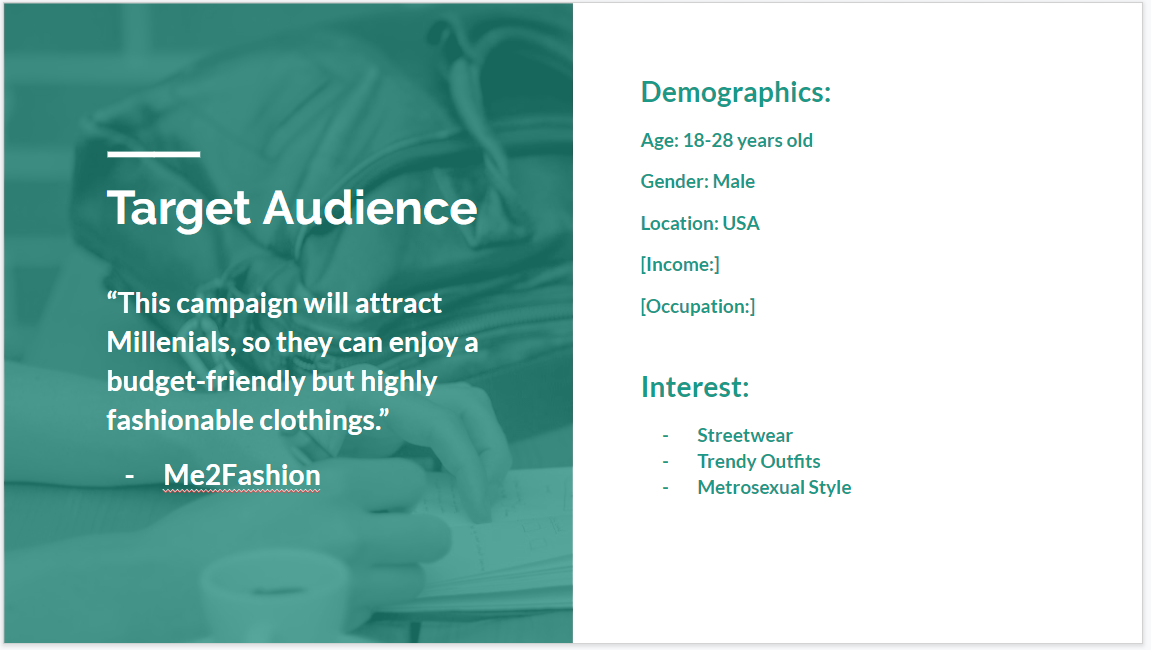
Slide 2: Target Audience
Set your Campaign Goals
Identify the purpose of each email in your campaign. This will help you set the right tone and will serve as a guide when you are creating your emails.
It is critical to set S.M.A.R.T. goals for your campaign. These goals will be the baseline of your campaign reporting; they have to be specific, mesurable, and ambitious but not impossible to reach.
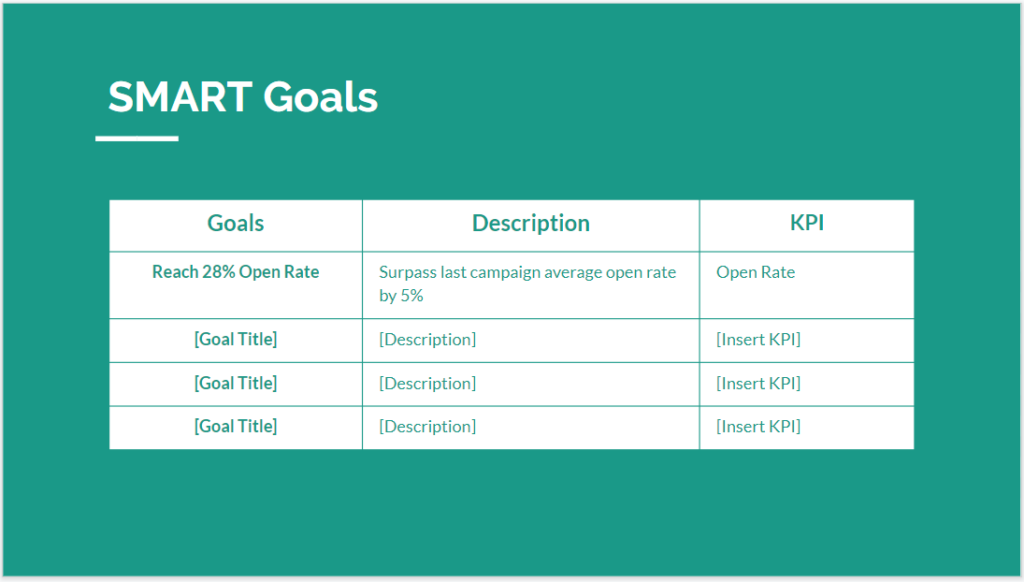
Slide 3: SMART Goals
List-Building Plan
As we talked about previously on the list building section, they are several ways to build your email list. Since you already got this far, I’d assume that you already have an approach in mind.
This is also where you’d have to think about what valuable content to offer to your prospects; and this will vary depending on what industry you are in. Ex: Discount codes and freebies for retail businesses and free ebook and webinar for software and/or B2B businesses.
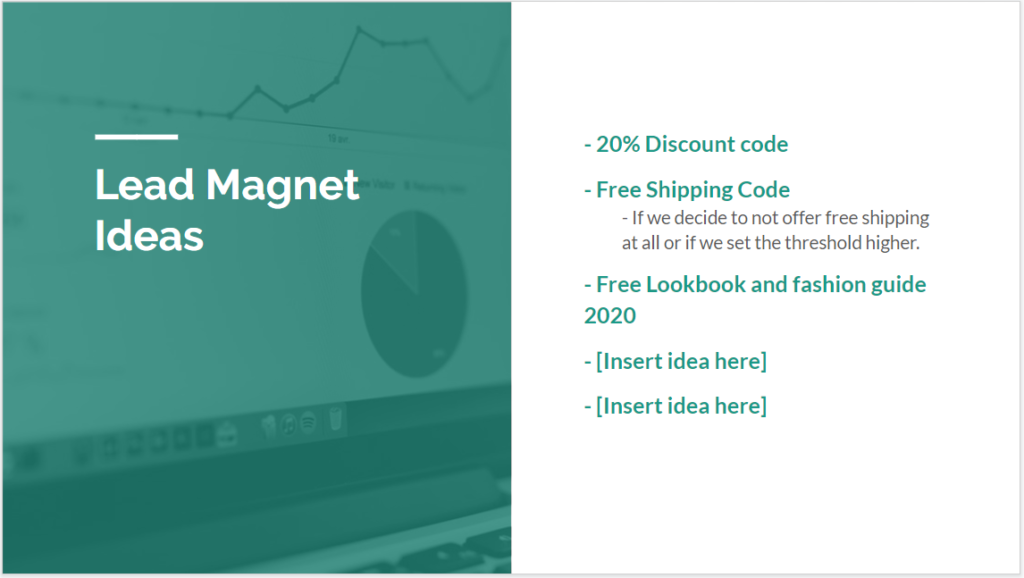
Slide 4: Lead Magnet Ideas
Types of Emails to Send for Your Campaign
Decide what types of email you want your series to have. Is this purely a promotional series? Do you want to highlight your website’s content?
Don’t worry! You can put more than one type of email into your campaign series. In fact, I highly recommend it. Just make sure that it is organised and structured logically.
Types of Email:
Promotional Emails – This email is what we usually see in our inbox. Whether it be a holiday or just a normal day, brands can make it seem that there’s always something to celebrate.
Highly rampant especially during the holiday season, these emails feature promotional items to freebies and anything in between. The main goal of this email is for your subscribers to make a purchase.

Kelley VanBoxmeer - CEO of Motion Invest
According to Kelley VanBoxmeer , CEO of Motion Invest, Email campaigns vary, and deciding between them can be difficult, in my opinion. You can begin by gaining an understanding of the various types of email marketing campaigns and then deciding which is optimal for your audience.
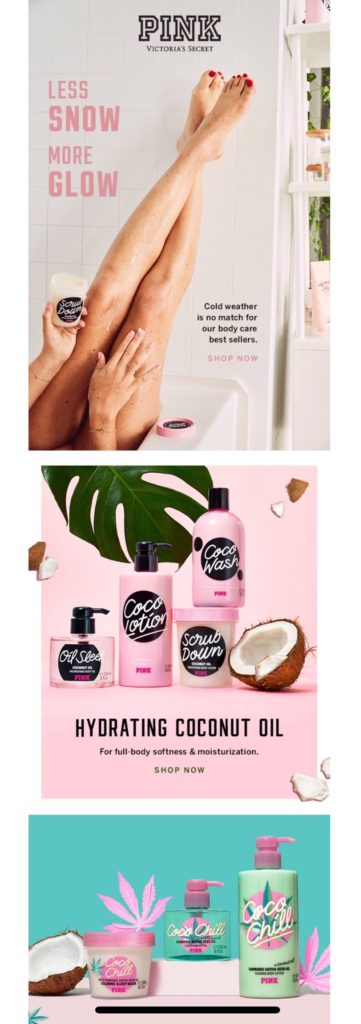
Winter Season Email

Wedding-themed Promotional Email
Newsletter – This is a common email that subscribers get at a recurring interval. It usually showcases newly added contents on your website. However, this doesn’t mean that you can put random content together. Set a general theme for each newsletter and stick to it.

Q-and-A website Quora sends out daily newsletter about topics that you’ve previously read on the website.
Drip Emails – Usually a series of several emails in your automation based on the interaction between your subscriber and your brand. The main goal of drip email is to push customers down the sales funnel by giving them light pushes in every email.
Abandoned cart emails and wishlist reminders are some examples of this type of email.
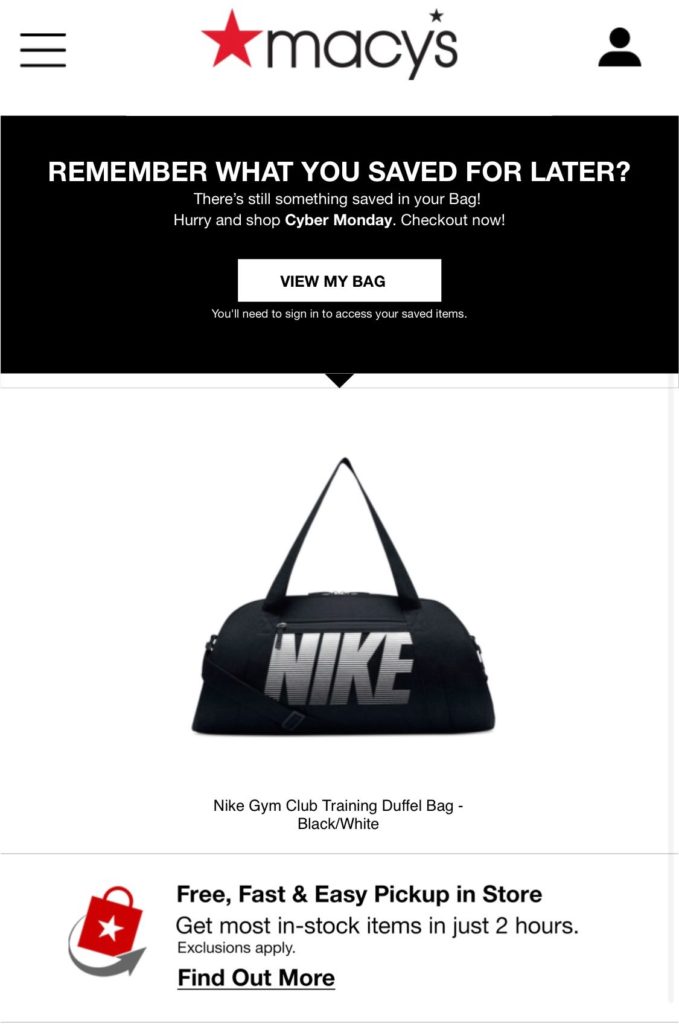
Create a Sending Schedule
You would want to send your emails at the best time possible, not too late that you’d missed your subscribers checking their email, and not too early that your message will be buried under a pile of new messages in their inbox.
This requires a lot of testing until you hit that sweet spot for your subscribers. Each list will be different, but here’s some guideline that you can follow as you’re building your schedule:
BEST DAYS TO SEND
T
TUESDAY
Th
THURSDAY
W
WEDNESDAY
BEST TIME TO SEND
6
AM
10
AM
2
PM
8
PM
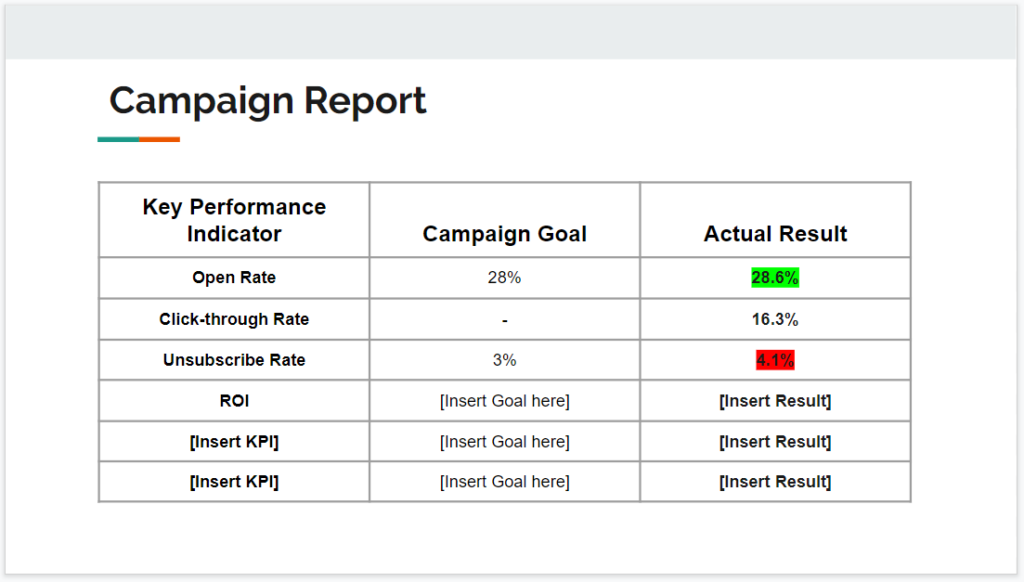
Slide 5: Campaign Report
Make sure to fill this out after your campaign. It will come in handy once you are on the stage of improving your Email Marketing Strategy.
